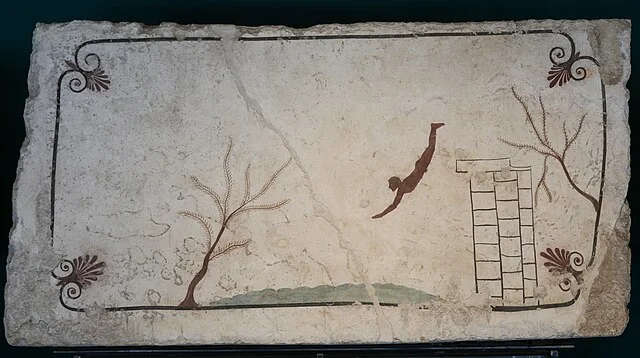The Tomb of the Diver is an ancient Greek burial site discovered in 1968 near Paestum, Italy. Dating back to around 470 BC, it is notable for its unique fresco depicting a diver plunging into water. This artwork remains the only known example of Greek painting from a non-funerary or non-vase-related context. The tomb offers significant insights into Greek funerary practices and philosophical beliefs about the afterlife.
Get your dose of History via Email
Discovery and Context
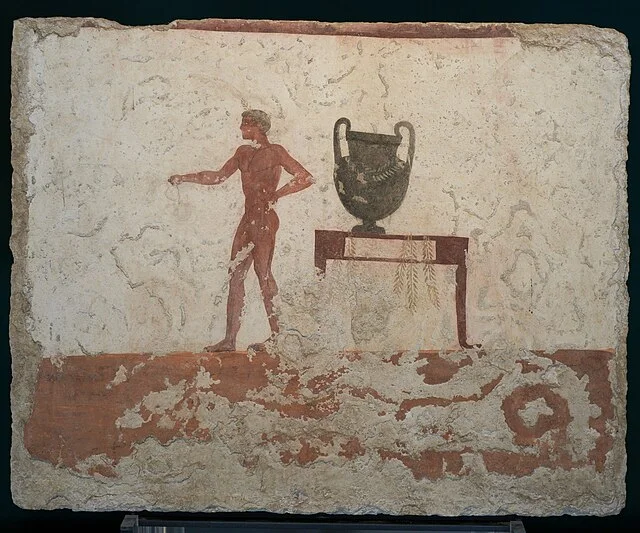
Italian archaeologist Mario Napoli unearthed the Tomb of the Diver during an excavation near the ancient Greek city of Poseidonia (later renamed Paestum). The tomb consists of five limestone slabs forming a rectangular chamber. The slabs were assembled to enclose the body of the deceased, a common Greek burial practice of the time.
This tomb is part of a necropolis containing other burials. However, the Tomb of the Diver is unique due to its painted decoration, which distinguishes it from the plain interiors of neighboring graves.
The Frescoes
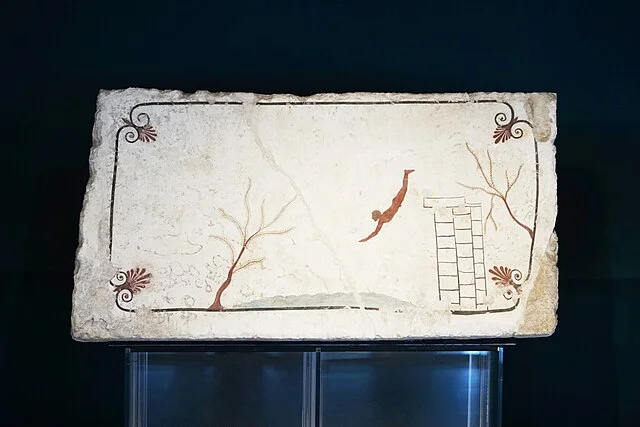
The frescoes inside the tomb depict two primary themes: the diver scene on the ceiling and symposium scenes on the side walls.
- The Diver Scene: The ceiling slab features a solitary figure diving into a stream or body of water. Scholars interpret this as a metaphor for the transition from life to death. The diver symbolizes a passage into the unknown, possibly reflecting philosophical views on the soul’s journey.
- Symposium Scenes: The walls show men reclining at a banquet, engaging in conversation, and enjoying wine. These scenes represent a symposium, a significant social and cultural gathering in ancient Greece. They may symbolize communal life or suggest an idealized vision of the afterlife.
Artistic and Cultural Significance
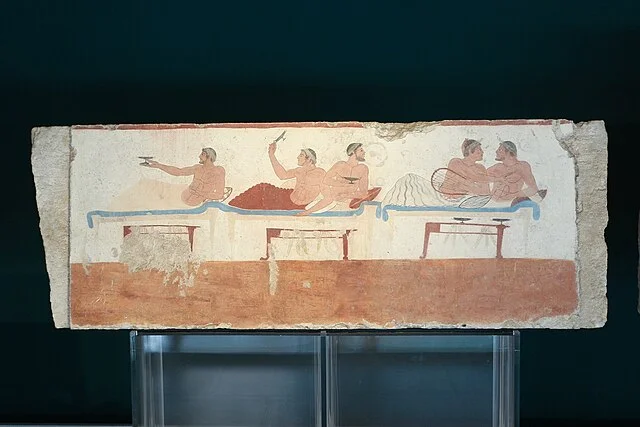
The frescoes in the Tomb of the Diver provide rare evidence of Greek painting from the Classical period. Greek painting of this era primarily survives on pottery, making these frescoes invaluable for understanding larger-scale Greek art.
The depictions also reflect influences from southern Italy’s Lucanian culture, blending Greek artistic traditions with local elements. This cultural synthesis demonstrates the interactions between Greek settlers and indigenous populations in Magna Graecia.
Interpretation of the Diver
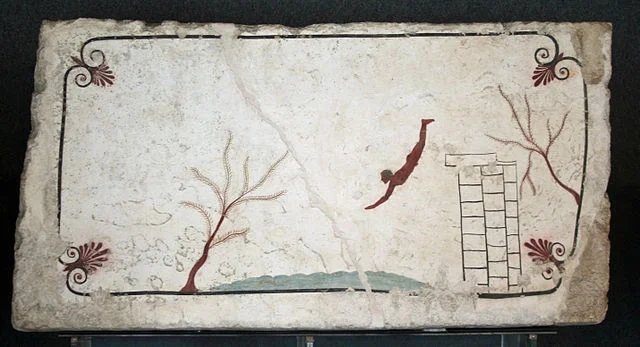
The meaning of the diver scene has inspired extensive scholarly debate. Some researchers see it as a philosophical statement about the afterlife, possibly influenced by Pythagorean or Orphic beliefs. Others argue it represents a literal or symbolic act of purification, aligning with Greek views on death and rebirth.
The absence of direct inscriptions or written records complicates interpretation. However, the fresco aligns with Greek ideas about life, death, and the soul’s immortality.
Conservation and Exhibition
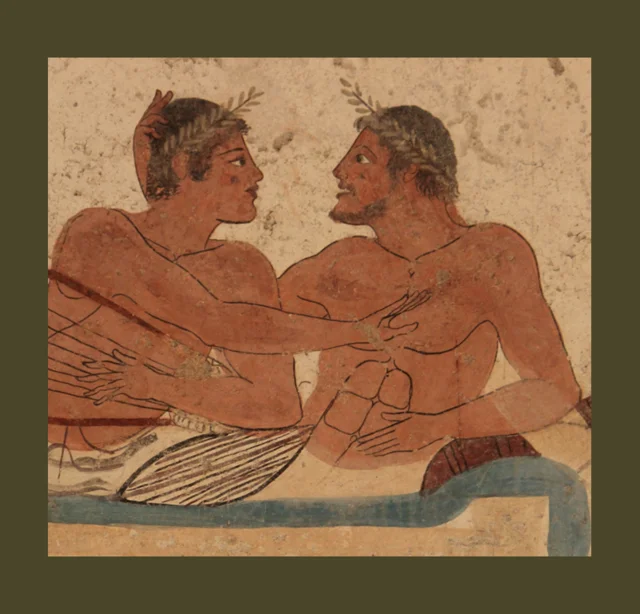
The Tomb of the Diver is housed in the National Archaeological Museum of Paestum. Conservation efforts have focused on preserving its delicate frescoes and preventing further deterioration. The tomb remains a key attraction for scholars and visitors interested in Greek art and burial practices.
Conclusion
The Tomb of the Diver is an extraordinary archaeological find that sheds light on Greek funerary art, culture, and philosophy. Its unique frescoes provide a rare glimpse into the beliefs and artistic expressions of a society over 2,400 years ago. Continued study of this tomb offers valuable insights into ancient Greek civilization and its enduring legacy.
Source:

